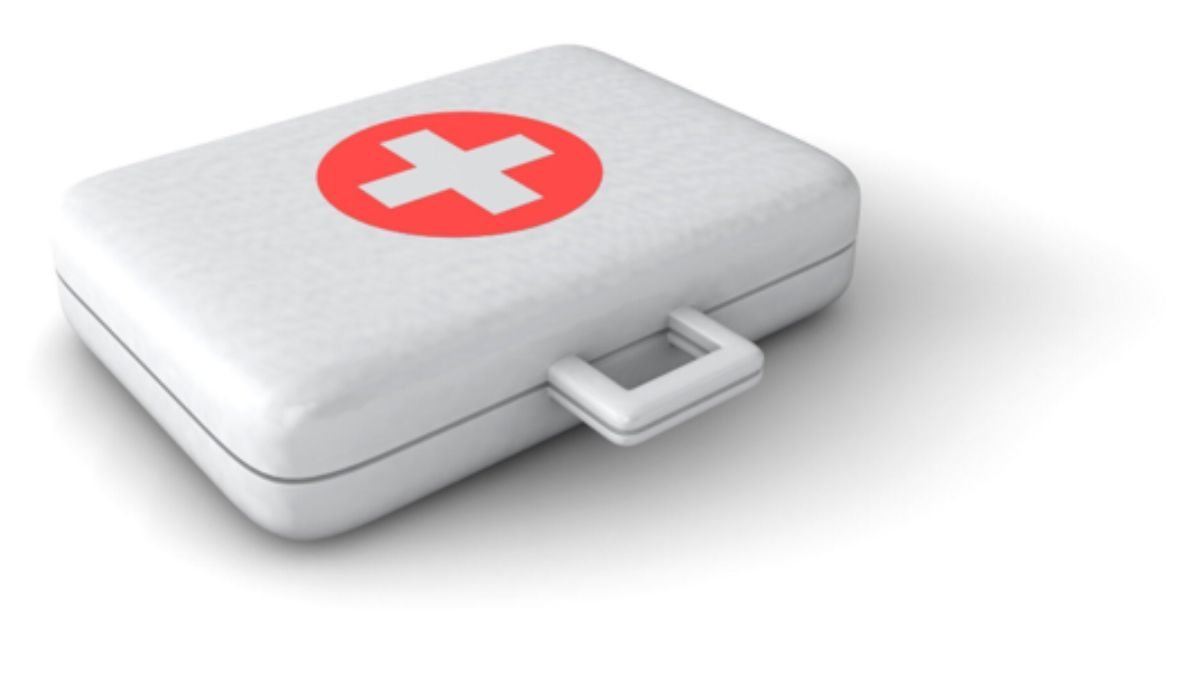HEALTH
Healthy Lifestyle: A Path to Wellness and Vitality

Living a healthy lifestyle is not just about making temporary changes to your diet or exercise routine. It’s about adopting habits and routines that you can maintain for a lifetime. A healthy lifestyle enhances your physical, mental, and emotional well-being, leading to a more fulfilling and productive life. In this blog, we will explore key elements of a healthy lifestyle and discuss how medications like Cenforce 100 and Fildena can play a role in addressing specific health issues.
Nutrition: The Foundation of Health
A balanced diet is fundamental to maintaining good health. Proper nutrition involves consuming a variety of foods that provide the necessary nutrients your body needs to function effectively. Here are some tips for a balanced diet:
- Eat a Rainbow of Fruits and Vegetables: Different colors often mean different types of nutrients. Aim to fill half your plate with fruits and vegetables at each meal.
- Whole Grains: Choose whole grains over refined grains. Whole grains contain more fiber and nutrients, which help in maintaining steady energy levels and digestive health.
- Lean Proteins: Incorporate lean proteins such as chicken, fish, beans, and legumes into your diet. These proteins are essential for muscle repair and growth.
- Healthy Fats: Don’t shy away from fats. Include healthy fats like avocados, nuts, seeds, and olive oil, which are beneficial for heart health.
Physical Activity: Keep Moving
Regular physical activity is crucial for maintaining a healthy lifestyle. Exercise not only helps in controlling weight but also reduces the risk of chronic diseases, improves mental health, and enhances overall quality of life. Here are some tips to stay active:
- Find an Activity You Enjoy: Whether it’s dancing, swimming, cycling, or yoga, finding an activity you love can make exercise feel less like a chore.
- Consistency Over Intensity: It’s better to engage in moderate exercise regularly than to engage in intense workouts sporadically.
- Incorporate Movement into Your Day: Take the stairs instead of the elevator, walk or bike instead of driving short distances, and stand up and stretch regularly if you have a sedentary job.
Mental Health: Mind Matters
Mental health is just as important as physical health. Managing stress and maintaining a positive outlook can significantly impact your overall well-being. Here are some strategies to support mental health:
- Practice Mindfulness and Meditation: These practices can help reduce stress and improve focus and emotional regulation.
- Stay Connected: Maintaining strong social connections can provide emotional support and help you feel connected.
- Seek Professional Help When Needed: If you’re struggling with mental health issues, don’t hesitate to seek help from a therapist or counselor.
Sleep: The Unsung Hero
Adequate sleep is often overlooked but is essential for good health. Poor sleep can lead to various health issues, including obesity, heart disease, and depression. Aim for 7-9 hours of quality sleep per night. Here are some tips for better sleep:
- Establish a Routine: Go to bed and wake up at the same time every day, even on weekends.
- Create a Relaxing Environment: Keep your bedroom cool, dark, and quiet. Invest in a comfortable mattress and pillows.
- Limit Screen Time Before Bed: The blue light from screens can interfere with your sleep. Try to turn off electronic devices at least an hour before bedtime.
The Role of Cenforce and Fildena in Men’s Health
While adopting a healthy lifestyle can significantly improve overall well-being, some health issues may require medical intervention. Cenforce and Fildena are medications commonly used to treat erectile dysfunction (ED) in men, a condition that can affect mental health and intimate relationships.
Cenforce
Cenforce contains sildenafil citrate, the same active ingredient found in Viagra. It works by increasing blood flow to the penis, helping to achieve and maintain an erection when sexually aroused. Cenforce is available in various strengths, allowing for tailored treatment based on individual needs.
Fildena
Fildena 100, also known as the “Purple Triangle Pill,” also contains sildenafil citrate. It functions similarly to Cenforce by enhancing blood flow to the penis. Fildena comes in different dosages, making it a versatile option for treating ED.
Using Cenforce and Fildena Safely
It’s crucial to use these medications under the guidance of a healthcare professional. Here are some considerations:
- Consult a Doctor: Before starting Cenforce or Fildena, consult with a doctor to ensure they’re safe for you, especially if you have underlying health conditions or are taking other medications.
- Follow Dosage Instructions: Adhere to the prescribed dosage to avoid potential side effects or complications.
- Be Aware of Side Effects: Common side effects include headaches, flushing, and upset stomach. If you experience severe side effects, seek medical attention immediately.
Conclusion
Living a healthy lifestyle is a multifaceted approach that involves balanced nutrition, regular physical activity, mental well-being, and adequate sleep. While these foundational elements are crucial, medications like Cenforce and Fildena can provide necessary support for specific health conditions such as erectile dysfunction. By combining healthy lifestyle habits with appropriate medical interventions, you can achieve a higher quality of life and overall wellness. Remember, it’s never too late to start making healthier choices—your body and mind will thank you!
HEALTH
Living Well in Later Years: Lifestyle Tips for the Elderly

Aging brings change, but it doesn’t have to slow anyone down. With the right habits, seniors can stay active, sharp, and independent. It’s not just about living longer, it’s about living better. Small changes in daily routines can improve both mood and mobility. Staying connected and making time for health goes a long way. It helps to focus on what’s still possible rather than what’s out of reach. Start making those changes today with these helpful lifestyle tips for the elderly.
Stay Physically Active
Regular movement helps keep joints flexible and muscles strong. Simple activities like walking or stretching are easy to add to a daily routine. Light exercise can also help with sleep and energy levels.
Staying active lowers the risk of heart issues and improves balance. Even gardening or household chores count as movement. The key is consistency over intensity.
Keep the Mind Sharp
Mental exercises are just as important as physical ones. Reading, puzzles, or learning something new helps keep the brain alert. Social interaction also keeps the mind engaged.
Avoid long hours of isolation to prevent mental decline. A daily habit of learning or conversation boosts memory and mood. These small actions can help maintain mental sharpness over time.
Focus on a Balanced Diet
What you eat affects how you feel and function. Seniors should aim for meals rich in fiber, vitamins, and lean proteins. Stay hydrated and limit processed foods.
A well-balanced diet supports brain and heart health. It also helps with digestion and energy. Food choices can play a major role in daily well-being.
Prioritize Sleep and Rest
Rest is necessary for healing and energy. Set a regular sleep schedule that suits your body’s natural rhythm. Avoid caffeine or heavy meals before bedtime. Keep the bedroom dark and quiet to improve sleep quality.
A short nap during the day is fine, but too much daytime sleep may affect night rest. Good sleep habits lead to better focus and strength.
Build Strong Social Connections
Spending time with others helps reduce stress and loneliness. Friends, family, or even group activities can give life meaning. Community centers and clubs are great places to meet new people.
Staying socially active also supports emotional health. Try to stay in touch even with short visits or phone calls. This is where insights into senior lifestyle trends show how important connection is to overall wellness.
Stay on Top of Medical Needs
Regular checkups help prevent small issues from becoming bigger. Keep track of medications and understand how they work. Talk to your doctor about any changes in how you feel.
Preventive care like screenings and vaccines are important. Staying informed gives peace of mind. Health care should be part of the routine, not just a reaction.
Discover Later Years Lifestyle Tips for the Elderly
A fulfilling senior life is within reach. It starts with small steps in the right direction. Focus on habits that support the body, mind, and relationships.
Keep routines simple and sustainable. It’s never too late to build a healthier lifestyle. Use these tips to make every day count. Growing older can still mean growing well.
Here to explore more? Our blog’s got you covered.
HEALTH
Expert Plastic Surgeons Transforming Beauty and Confidence

Looking good often leads to feeling good. Many people choose plastic surgery to enhance their beauty and boost their self-esteem.
But choosing the right plastic surgeons are not easy. It requires careful research and consideration. This article will guide you through important tips to help you find an expert plastic surgeon who can transform your appearance and improve your confidence.
Check the Surgeon’s Credentials
The first step in finding an expert plastic surgeon is to check their credentials. Make sure the surgeon is board-certified by a recognized medical board.
Certification proves that the doctor has the right training and skills to perform plastic surgery safely. You can visit medical board websites to verify their license and check for any past complaints or issues.
Look at Before and After Photos
A good way to measure a plastic surgeon’s skill is by looking at their previous work. Most surgeons have photo galleries of past patients who have had similar procedures. Study these photos closely.
Look at the changes made, the natural look of the results, and whether the outcomes meet your expectations. These photos can give you a clear idea of the surgeon’s ability to enhance beauty while maintaining a natural appearance.
Read Patient Reviews and Testimonials
Reading what past patients say can help you decide if a surgeon is right for you. Look for reviews on websites, social media, and clinic pages. Positive reviews often highlight the surgeon’s skill, bedside manner, and how well they handle questions and concerns.
Be cautious of any surgeon who has many negative reviews or no reviews at all. Honest feedback from other patients gives you insight into the overall experience and satisfaction rate.
Consult and Ask the Right Questions
Booking a consultation is an important step in the decision-making process. During your consultation, ask about the procedure, the risks, the recovery time, and what results to expect. It is also a good time to see if you feel comfortable with the surgeon.
Good surgeons are patient, informative, and honest. They should not pressure you or make unrealistic promises. Also, ask if they offer non-invasive body treatments, especially if you are looking for options with shorter recovery times and less risk.
Consider the Clinic’s Facility and Staff
An expert surgeon should operate in a clean, accredited clinic or hospital. Make sure the facility meets safety standards and has modern equipment. Friendly and professional staff also make a big difference in your experience.
They help with scheduling, follow-ups, and answering questions. A well-organized and supportive team reflects a high level of care and professionalism from the surgeon and clinic.
All About Expert Plastic Surgeons
Choosing the right plastic surgeon is a big decision. Your safety, beauty, and confidence are at stake, so take your time and do the necessary research. Check credentials, review past work, read patient reviews, ask questions, and visit the facility.
These steps will help you find an expert who can deliver natural, beautiful results and improve your self-confidence. With the right surgeon, your journey to enhancing your appearance will be safe, smooth, and satisfying.
Looking for more tips and ideas? We’ve got you covered. Check out some of our other posts now.
HEALTH
What You’ll Learn in CPR & First Aid Training Courses

Have you ever wondered what you would do if someone collapsed in front of you or had a serious injury? It’s a scary thought, but being prepared makes a huge difference. CPR & First Aid training courses teach you exactly how to handle emergencies like this.
In this blog post, you’ll discover what skills you’ll learn, how these courses work, and why this training is so important. By the end, you’ll feel ready to take the next step toward saving lives.
Learn to Act Fast in Emergencies
One of the first things you’ll learn in CPR & First Aid training is how to stay calm when an emergency happens. These courses show you how to think clearly and take action when seconds matter. Whether someone has trouble breathing, is bleeding badly, or has passed out, knowing what to do right away can help save their life.
You’ll learn how to assess the situation, check for danger, and start helping before professionals arrive. These steps can make all the difference.
Discover the Power of CPR
CPR stands for Cardiopulmonary Resuscitation. It sounds complicated, but you’ll learn that it’s easy to do. CPR is a method used when a person’s heart stops beating.
You’ll find out how to push down on the chest in a steady rhythm and how to give breaths if needed. These actions help move oxygen through the body until help comes. CPR is a lifesaving skill, and anyone can do it once they are trained.
Understand How to Use an AED
An AED is a device that gives a shock to the heart to help it start beating again. During your training, you’ll learn how to use it step by step. The machine talks to you and tells you what to do, which makes it easier.
You’ll also learn where to find AEDs in public places and why quick use is so important. Using an AED right away can increase a person’s chances of survival, and you’ll be ready to do just that.
Learn to Handle Common Injuries
Every day, accidents happen all the time. Someone might cut themselves, fall, or have a burn. In CPR & First Aid training, you’ll learn how to help with these injuries.
You’ll find out how to clean and cover a wound, treat a burn, or wrap a sprain. You’ll also learn what not to do so you don’t make things worse. Knowing how to give the right care right away helps someone feel better and heal faster.
Be Ready for Choking and Allergic Reactions
Choking is another emergency that can happen suddenly. These courses show you how to spot the signs and what to do to help. You’ll learn how to perform back blows and the Heimlich method.
Allergic reactions can also be dangerous. You’ll learn how to use an epinephrine auto-injector and how to help the person stay safe until help comes. These are real situations that anyone could face, and now you’ll know what to do.
If you’re curious about even more topics covered in these lessons, get more info by visiting your local training center or health organization.
First Aid Training: The Power to Save Lives
Taking CPR & First Aid training courses gives you the skills to help others during some of life’s scariest moments. You don’t need to be a doctor or nurse. Just knowing what to do during an emergency can save lives.
These courses help prepare you for real-life emergencies in a simple, hands-on way. Did this guide help you? Browse the rest of this section for more advice on a variety of topics.
-

 HEALTH1 year ago
HEALTH1 year agoIntegrating Semaglutide into Your Weight Loss Plan: A Practical Guide
-

 HOME IMPROVEMENT1 year ago
HOME IMPROVEMENT1 year agoHow to Choose the Perfect Neutral Area Rug for Every Room
-

 LAW1 year ago
LAW1 year agoPost-Divorce Considerations in California: Modifications and Long-Term Planning
-

 LAW1 year ago
LAW1 year agoTeenage Drivers and Car Accidents in California: Risks and Parental Liability
-

 CONSTRUCTION1 year ago
CONSTRUCTION1 year agoConstruction Site Safety Regulations in New York and Your Rights as a Worker
-

 FINANCE1 year ago
FINANCE1 year agoDigital Asset Management in Florida Estate Planning
-

 LAW1 year ago
LAW1 year agoKentucky’s School Football: Concussions, Injuries, and Legal Options
-

 LAW1 year ago
LAW1 year agoGang Activity and Criminal Charges in CA: Protecting Your Rights
